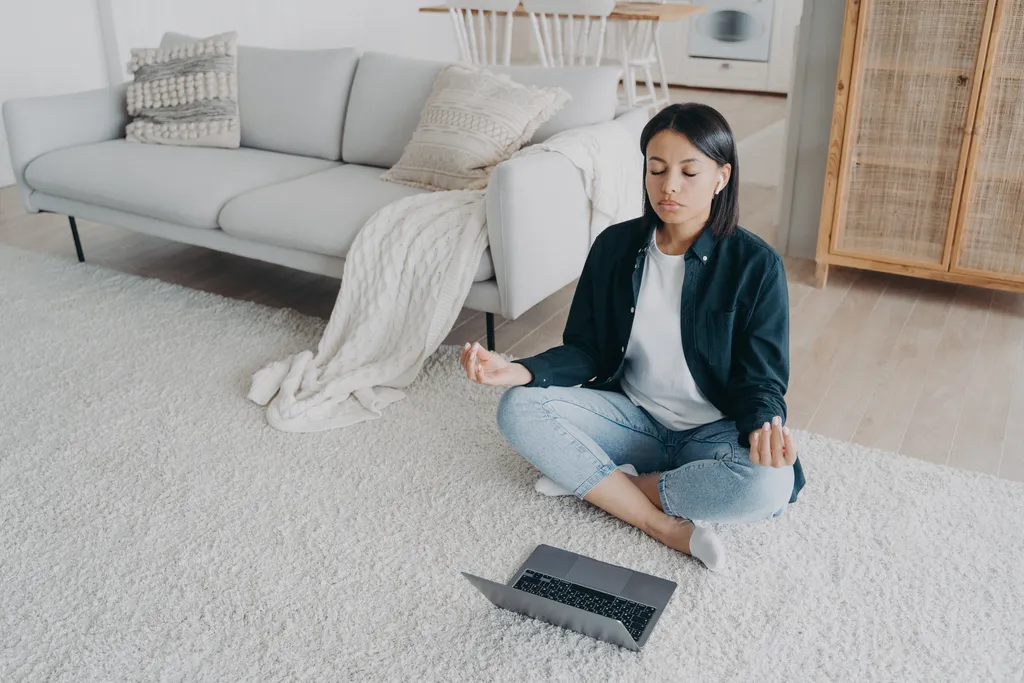Introduction
Do you find it hard to live a peaceful and balanced life? Are you seeking a tool, habit, or method to help you organize and clear your daily tasks? If you say yes, Yogic Science is the only thing you need. This practice comes from traditional Indian ways of life that go back thousands of years. It has been seen as a way to balance the body and mind. By learning more about yogic science, we can unlock our inner knowledge and find more peace within ourselves.
Read The Pros and Cons of This Ancient System
This blog post will discuss the connection between yoga theory and scientific principles and show how yoga can be a helpful guide for transitioning from stress-relieving techniques to mindful meditation. Whether you are new to yogic science or have been studying it for years, this book has something for everyone.
What is Yogic Science, and how can it benefit your life?
Yogic Science looks at health and well-being from all angles. It includes yoga poses, breathing exercises, meditation, and philosophical ideas. The idea is that the mind, body, and spirit are all linked and should work together for good health. The word “yoga” itself means “union” or “unity,” which is a metaphor for how all of our parts are connected. Yogic Science tries to bring balance, mindfulness, and mental peace by bringing together these different parts of who we are.
The practice of yoga science can help people learn a lot about their minds and bodies. When we know ourselves better, we can form healthier habits and make good choices for our general health. Yogic Science also shows us how to deal with stress and worry and find peace and stillness inside ourselves even when life is hectic. Yoga routines can help us become healthier physically, mentally, and emotionally stable and grow spiritually if we do them every day.

how to incorporate yogic science into life
- Whether it’s 10 minutes or more, set aside some time daily to do yoga and meditate.
- Do some yoga breathing exercises to help calm your mind and body during the day.
- To practice awareness, pay attention to everything around you while you eat or walk daily.
- Develop a positive attitude by being thankful and happy even when things are hard.
- Let go of attachments and find inner peace by practicing separating yourself from things and expectations.
- As you go about your daily life, remember yogic ideals like ahimsa (nonviolence), Satya (honesty), and tapas (self-discipline).
Meditation Techniques to Reduce Stress and Anxiety
Meditation is an integral part of spiritual science, and research has shown that it is suitable for our mental and emotional health in many ways. The main goal of meditation is to calm the mind and feel at peace with yourself. Doing so can help us feel less stressed and anxious, concentrate better, and develop a calmness beyond our meditation practice.
There are different ways to meditate in yoga science, and each has its benefits. Here are some well-known ones you can try:

Mindfulness Meditation
Focusing on the present moment and watching your thoughts without judging them is part of this method. It can help you feel less stressed, think more clearly, and learn more about yourself.
Transcendental Meditation (TM)
For this method, you repeat a mantra (a word or phrase) in your thoughts to feel deeply relaxed and at peace with yourself. It is excellent for lowering stress and worry and improving health in general.
Loving-Kindness Meditation
Sending good thoughts and hopes to ourselves and others is part of this practice. We can lower our bad feelings and improve our general health by growing feelings of love, kindness, and compassion.
Visualization Meditation
Visualizing a peaceful scene or the desired result is part of this method for calming yourself down and feeling relaxed. It helps us feel less stressed and anxious and positively changes our lives.
The Power of Breathwork in Yogic Science
In yoga science, the breath connects the mind and body. We can improve our physical, social, and emotional health by using the power of our breath. In yoga science, some common ways to work with breath are:
Pranayama
This refers to breathing techniques that help us keep our life force energy (prana) in check. It can help lower stress, give you more energy, and improve your health.
Alternate Nostril Breathing (Nadi Shodhana)
For this method, breathe in through one nose and out through the other, switching back and forth between the two. It’s thought to balance the left and right sides of the brain, which is good for your health and mental sharpness.
Belly Breathing (Diaphragmatic Breathing)
For this method, you breathe deeply into your belly while moving your stomach up and down. It can help you feel less stressed, rest, and digest food better.
Kapalabhati (Skull-Shining Breath)
Rapid, powerful exhalations are done first, followed by passive inhalations. People believe it cleans the body and mind, gives you more energy, and helps you concentrate and think clearly.

What to Expect from a Yogic Science Practice
While everyone’s experience with yoga science practice differs, many say it helps them in specific ways. Some of these are:
Improved physical health
When practiced regularly, yoga and meditation can enhance a person’s flexibility, strength, and overall physical well-being.
Reduced stress and anxiety
It has been scientifically demonstrated that engaging in yogic activities like mindfulness, meditation, and deep breathing can help reduce stress and increase relaxation.
Increased self-awareness
Focusing on the here and now and watching our thoughts without judgment can help us understand who we are and how we think.
Improved mental clarity
Yogic activities can help reduce mental chatter and calm the mind, ultimately improving focus, concentration, and mental clarity.
The overall sense of well-being
Applying yogic ideas and practices in daily life can facilitate the development of a sense of equilibrium, inner calm, and connectedness to oneself and others.
Quick Tips for Making the Most Out of Your Yogic Science Journey
Start small
You shouldn’t feel like you have to jump into a full-fledged yoga and meditation practice the moment you start. Your daily practice should begin with just a few minutes, and you should progressively increase the time you spend doing it until it becomes comfortable.
Find what works for you.
Within yogic science, there are various approaches to practicing yoga, meditation, and breathwork. Try different things and see what works best for you and your requirements.
Be consistent
Consistency is the most crucial factor in realizing the advantages of yogic scientific practice. Establish a routine time for your practice, and do your best to adhere to it as much as possible.

Let go of expectations.
It is essential to get into your path of yogic science with a blank slate and no preconceived notions about how things should turn out. Because people’s experiences differ significantly, you shouldn’t hold yourself to high standards or compare yourself to others.
Conclusion
Finding out more about yourself, your health, and the world around you can be done through Yogic Science. It is possible to significantly improve our physical, mental, and social health by combining yoga, meditation, and breathwork. The path to a more balanced, focused, and peaceful life may differ for each person, but the goal is usually the same. Remember that it’s not about being great but about getting better. Each step on this path gets you closer to a state of balance between your mind, body, and spirit. Enjoy the trip, and be grateful for the good things that Yogic Science does for you.
FAQs about Yogic Science
Q1: What is Yogic Science?
Yogic Science is an old Indian field of study that uses yoga poses, meditation, and breathwork to improve health on all levels: physical, mental, and social.
Q2: I am a beginner. Can I still practice Yogic Science?
Of course! People of all kinds of skills can use Yogic Science. Start slowly, maybe with a few easy yoga poses, and add meditation and breathwork over time.
Q3: Do I need any special equipment to practice Yogic Science?
Not in the least. A yoga mat can help with comfort and stability during physical routines, but you don’t need anything special to meditate or do breathwork.
Q4: How long does it take to see the benefits of Yogic Science?
Each person is different, and so is their path with Yogic Science. It could take a few weeks or a few months for some people to notice changes. If you want to see results over time, you must be consistent.
Q5: Can Yogic Science help reduce stress and anxiety?
Yes, Yogic techniques like meditation, deep breathing, and being mindful have been shown to help people relax and feel less stressed.




